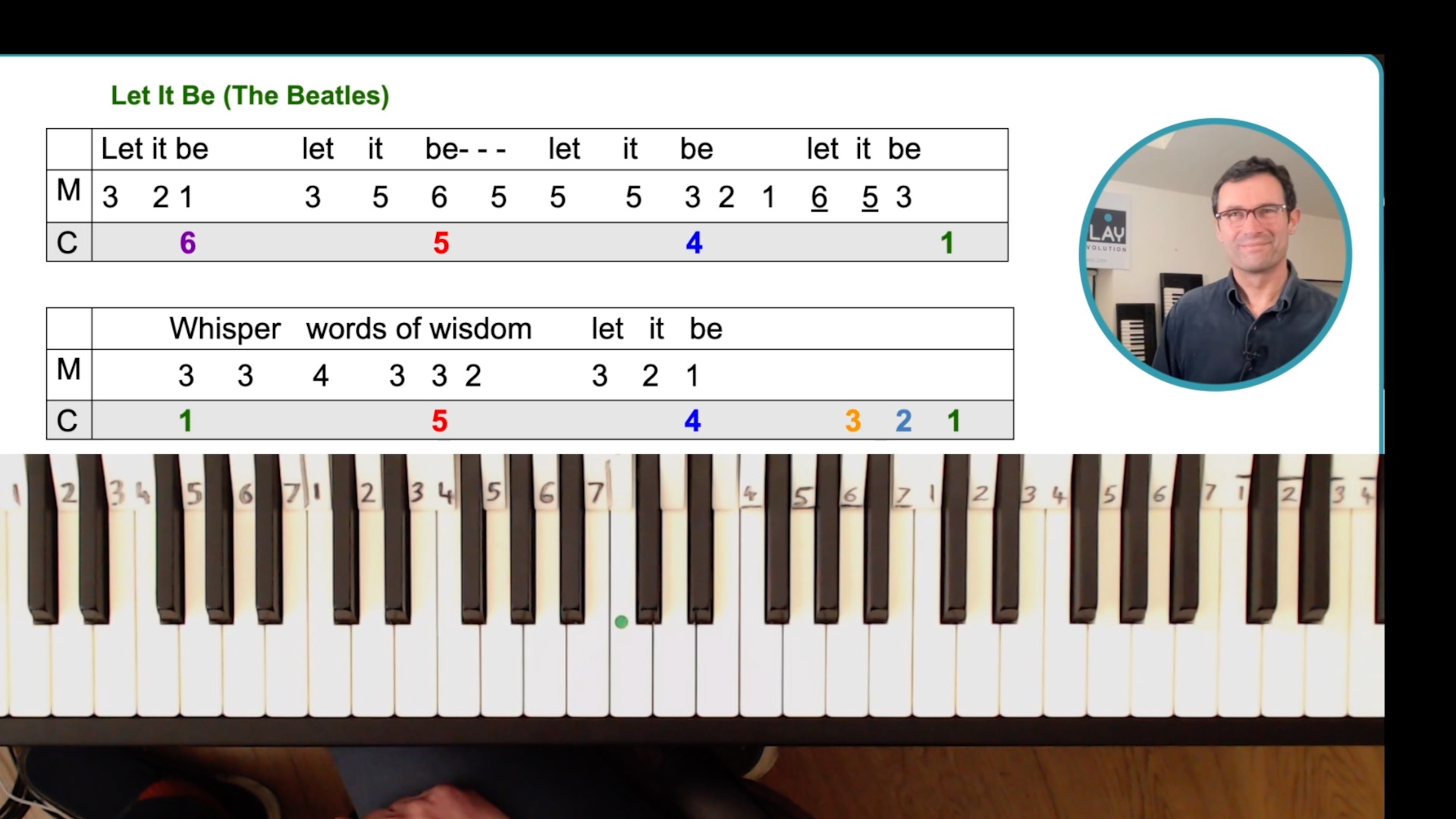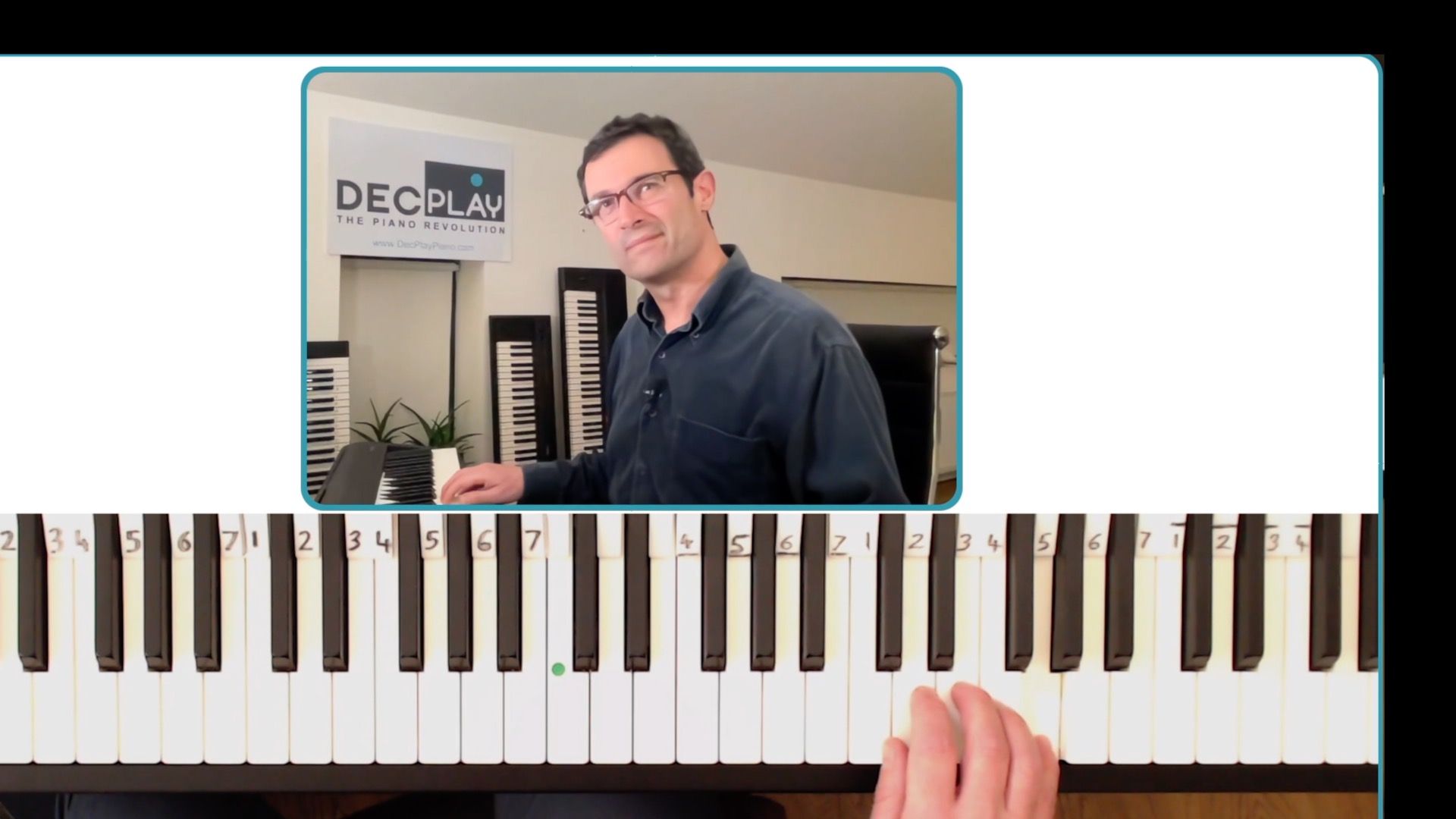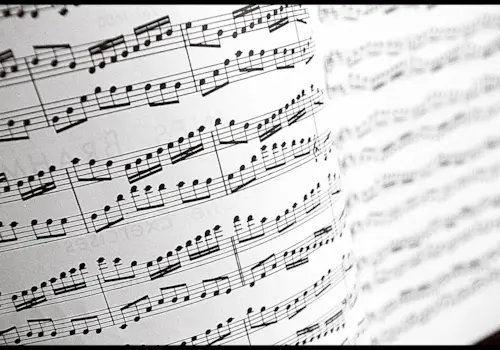Have you ever wished you could sit down at a piano, think of a song, and just play it? Playing your favourite tunes effortlessly, whether at home or as the life of a party, is easier than many people think.
I’m Declan Cosgrove, the creator of the DecPlay piano method, and over the years, I’ve helped thousands of people unlock their ability to play by ear, from total beginners to experienced pianists. In this article, I will share with you the key steps that make playing by ear fun, liberating, and surprisingly simple!
Why Play Piano by Ear?
Here’s three reasons why playing piano by ear is so amazing:
1 Confidence and Freedom:
Being freed from the restrictions of sheet music enables you to play songs on piano with a relaxed, intuitive approach. This fosters a feeling of confidence and freedom as playing feels much more ‘natural’ and flowing, with great flexibility in what notes you choose to play in the accompaniment. This allows you to express your creativity as you can choose to play the accompaniment in any style or level that you like (beginners, intermediate or advanced).
As you are not reading notes from sheet music, you can instantly transpose and play in different keys, which is really useful at a party sing-a-long.
2 Impressive and Fun:
Surprise friends and family by playing songs they request, on the spot! Instead of being restricted to exactly replicating notes from sheet music, you can identify simple patterns within songs. These patterns enable impressive-sounding music, created using just the melody and a small number of chords.
A new playing by ear method within the DecPlay range of methods (called EarPlay) provides a framework that enables you to work out songs in your head within seconds. The benefit of this is that you can spend more time on enjoying playing piano and developing skills like improvisation, instead of wasting time on tedious practice or trying to memorise a huge number of individual notes.
3 Improvisation and Creativity:
Because you learn to ‘hear’ the simple patterns commonly used in Western music, you quickly become familiar with the fundamental building blocks that make it much easier to improvise and compose your own music.
Many students (like Mike aged 79) have been able to start composing their own songs within weeks of applying this approach. In Mike’s case this was particularly surprising as he had tried and failed to learn piano as a child and so wrongly believed that he ‘wasn’t musical’!
Busting the Myth
Many people believe that playing by ear is a talent you’re born with or that it requires learning countless scales and music theory. That couldn’t be further from the truth!
In reality, everyone has some natural musical ability, which can be unlocked when you use an intuitive approach that mirrors how we ’hear’ music.

The Key to Playing By Ear – Relative Scale
The key to playing by ear is understanding that music is based on a seven-note ‘relative’ scale (which is sometimes referred to as do, re, mi, fa, sol, la, ti). This scale (and therefore any song) can start from any key on the piano, and (unless you have the rare gift of perfect pitch) it’s the relative movement of the notes that we recognise when we recognise a song, not the specific notes themselves.
Playing by ear becomes easy when you combine 3 things:
- Understanding of the relative scale
- Process to identify melody notes and chords by ear
- Playing patterns to create impressive sounding music from just the melody and chords

Overcoming Common Challenges
EarPlay is designed to overcome the challenges that often prevent people from learning to play by ear:
1. Confusion About Notes and Keys
• Traditional music notation can be overwhelming, with an abundance of notes, 12 different musical keys and dozens of scales
• EarPlay simplifies this complexity using a single relative scale that mirrors how we ‘hear’ music.
2. Identifying Melody and Chords by Ear
• A melody is a series of single notes that define the ‘tune’ and chords are the notes that accompany the melody.
• The free downloadable PDF Playing By Ear Guide outlines the EarPlay process, enabling you to recognise both melody and chords by ear. An overview of this is also included in the video below.
• Most songs use melody notes from a 7 note scale and most songs can be played using the same 6 chords. In fact many songs can be played using just chords 1, 4, 5 and 6 with most Rock n Roll songs and songs like Happy Birthday and Auld Lang Syne using just chords 1, 4 and 5. The main theme from Beethoven’s Ode To Joy can also be played just using chords 1, 4 and 5.
• There are some very simple indicators that make it easy to identify melody notes and chords instantly in your head, enabling you to play songs immediately, without needing to ‘fiddle around’ on the piano keyboard
3. Playing Impressive Music Using Melody and Chords
• Transform simple melodies and chords into beautiful music using flexible ‘playing patterns’ which are quick to learn and enable rapid skill development, from beginner to advanced.
How EarPlay Works
See the video below for a demonstration of how to play by ear using the EarPlay process
Student Results
This approach to playing by ear works irrespective of whether you have any existing experience of playing piano, so it is effective for both absolute beginners and proficient pianists.
Examples from the DecPlay student community are included in the video above, including:
- Pam and Gilbert – total beginners who now play their favourite songs with confidence
- Krys and Linda – rediscovered their passion for piano after decades away from the instrument.
- Dee (age 95) – who passed grade 8 piano but hadn’t played for 30 years, before using the DecPlay method to play classical pieces and popular songs. Dee said “for the first time ever I’m truly enjoying playing piano. I’m playing with freedom and it has boosted my confidence”.
FREE PDF Guide – Playing By Ear
Get the free 'Playing By Ear' PDF guide at decplay.com/pianist-earplay for detailed, step-by-step instructions on how to play piano by ear.
Happy piano playing!







